Joan Miro Spanish, 1893-1983 Femmes devant la lune, 1944 Signed Miro and dated 1944 on the reverse and inscribed as titled on the stretcher Oil and pastel on canvas 10 1/4 x 13 3/4 inches (26 x 35 cm) Provenance: Mrs. George Acheson, New York Galerie Beyeler, Basel, 1979 [Perls Gallery, New York] Private collection, acquired circa 1980 Literature: Jacques Dupin and Ariane Lelong-Mainaud, Joan Miro: Catalogue Raisonne: Paintings, vol. 3, p. 30, no. 676, illus. Jacques Dupin, Miro, Paris, 1961, p. 528, no. 576 In 1939, Miro left his peers and the thriving art center of Paris to take refuge from the war. He moved first to Varengeville-sur-Mer in Normandy, and soon after left France entirely for his wife's hometown of Palma in Mallorca, where he remained until 1942. During the time spent in these two places, Miro retreated into himself, developing a very personal and unique imagery. The result of this inward focus is a group of small gouaches known as "The Constellations." These works represent a high point in the artist's development, for they established the language he would use so fluently in his paintings, drawings, sculptural forms and ceramics for the rest of his artistic career. In 1944 Joan Miro returned to the oil medium after four years of developing his ideas in gouache. He took this new language to canvas with a confidence and fluidity that radiates from each work. Many of these new paintings were executed in small scale on loosely woven canvas. Short of viewing a work such as "Femmes devant la lune" firsthand, Jacques Dupin's description of the art of this period offers a verbal painting in itself: "Palpitating backgrounds, such as the artist always aimed at, are obtained either through use of large grained canvas, here and there lightened by almost imperceptibly modulated color, or with painstakingly delicate scumbles and scrapings. Miro had to take possession of the space, to tame the canvas by subjecting it to wear and tear, to a sort of erosion at his own hands, before he could with full authority set down his figures and signs in detail, in regular lines and areas of pure color." By the end of 1945 World War II was coming to a close, and Miro had moved on to larger-scale works in a variety of mediums, but the two years he devoted to these small-scale paintings stands out as one of the strongest moments of his illustrious career. The impact that these works made on the art of their time-an impression that resonates even today-is incalculable. Jacques Dupin, Miro, Paris, Flammarion, 2004 James Thrall Soby, Joan Miro, New York, The Museum of Modern Art, 1959 C
The canvas edges have nail holes from prior stretching. There are 1/4 inch thich strips of wood along outer edge of strechers, enlarging canvas size. Pigments are in good condition. The canvas is compressed at edges from frame contact.
Joan Miro Spanish, 1893-1983 Femmes devant la lune, 1944 Signed Miro and dated 1944 on the reverse and inscribed as titled on the stretcher Oil and pastel on canvas 10 1/4 x 13 3/4 inches (26 x 35 cm) Provenance: Mrs. George Acheson, New York Galerie Beyeler, Basel, 1979 [Perls Gallery, New York] Private collection, acquired circa 1980 Literature: Jacques Dupin and Ariane Lelong-Mainaud, Joan Miro: Catalogue Raisonne: Paintings, vol. 3, p. 30, no. 676, illus. Jacques Dupin, Miro, Paris, 1961, p. 528, no. 576 In 1939, Miro left his peers and the thriving art center of Paris to take refuge from the war. He moved first to Varengeville-sur-Mer in Normandy, and soon after left France entirely for his wife's hometown of Palma in Mallorca, where he remained until 1942. During the time spent in these two places, Miro retreated into himself, developing a very personal and unique imagery. The result of this inward focus is a group of small gouaches known as "The Constellations." These works represent a high point in the artist's development, for they established the language he would use so fluently in his paintings, drawings, sculptural forms and ceramics for the rest of his artistic career. In 1944 Joan Miro returned to the oil medium after four years of developing his ideas in gouache. He took this new language to canvas with a confidence and fluidity that radiates from each work. Many of these new paintings were executed in small scale on loosely woven canvas. Short of viewing a work such as "Femmes devant la lune" firsthand, Jacques Dupin's description of the art of this period offers a verbal painting in itself: "Palpitating backgrounds, such as the artist always aimed at, are obtained either through use of large grained canvas, here and there lightened by almost imperceptibly modulated color, or with painstakingly delicate scumbles and scrapings. Miro had to take possession of the space, to tame the canvas by subjecting it to wear and tear, to a sort of erosion at his own hands, before he could with full authority set down his figures and signs in detail, in regular lines and areas of pure color." By the end of 1945 World War II was coming to a close, and Miro had moved on to larger-scale works in a variety of mediums, but the two years he devoted to these small-scale paintings stands out as one of the strongest moments of his illustrious career. The impact that these works made on the art of their time-an impression that resonates even today-is incalculable. Jacques Dupin, Miro, Paris, Flammarion, 2004 James Thrall Soby, Joan Miro, New York, The Museum of Modern Art, 1959 C
The canvas edges have nail holes from prior stretching. There are 1/4 inch thich strips of wood along outer edge of strechers, enlarging canvas size. Pigments are in good condition. The canvas is compressed at edges from frame contact.
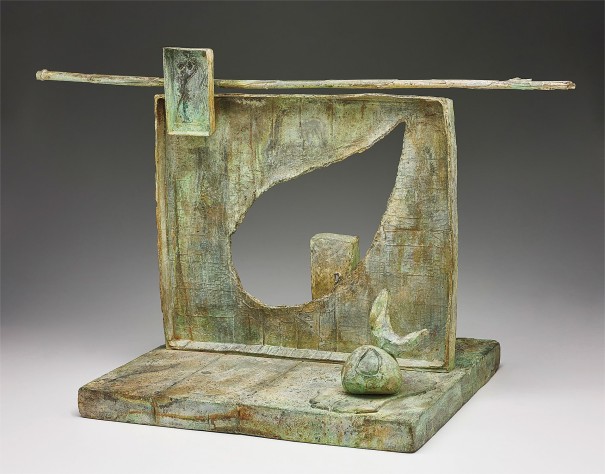
.jpg)
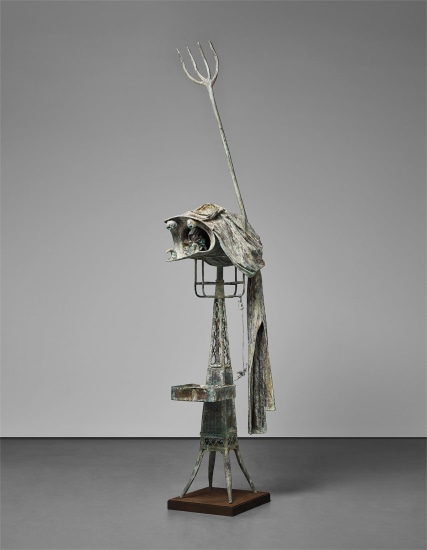
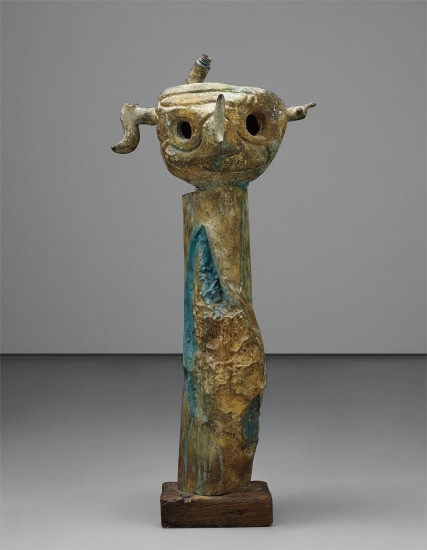
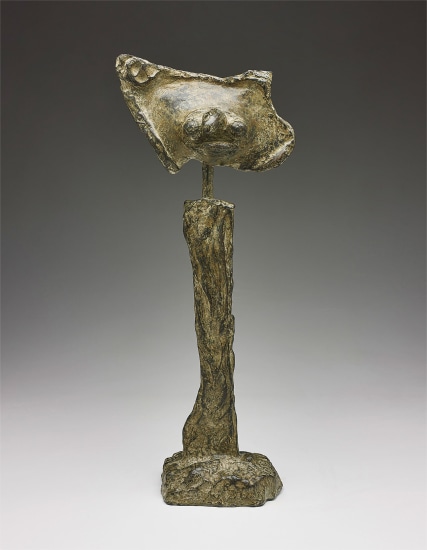




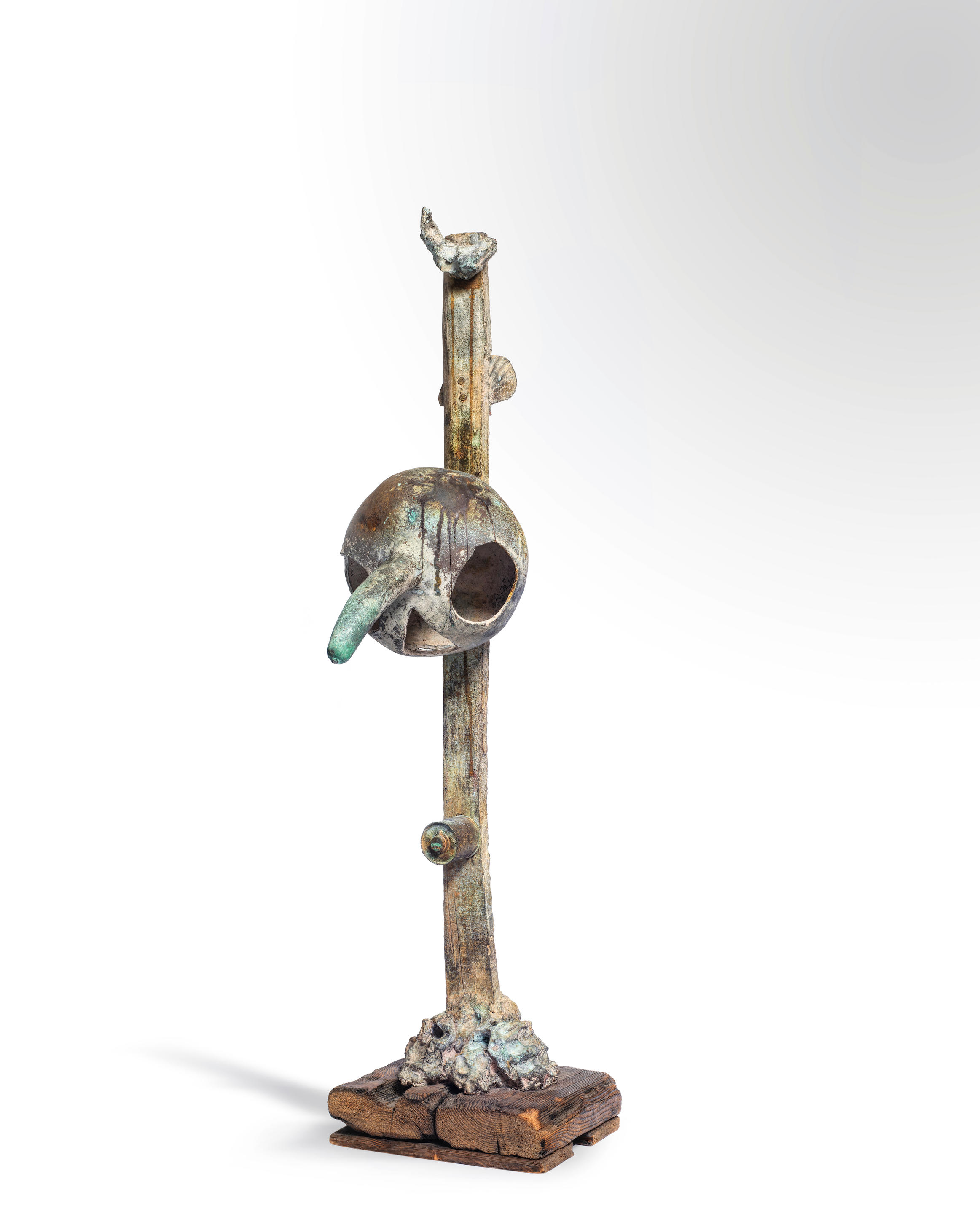
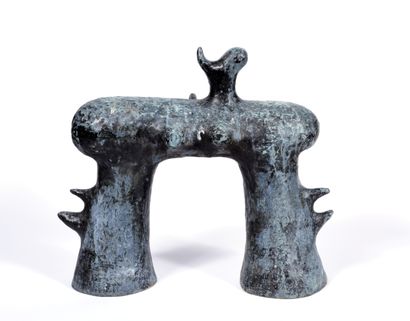



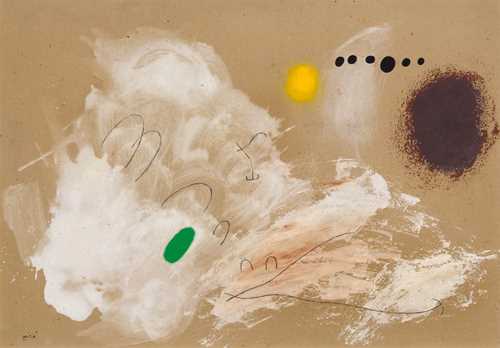
Testen Sie LotSearch und seine Premium-Features 7 Tage - ohne Kosten!
Lassen Sie sich automatisch über neue Objekte in kommenden Auktionen benachrichtigen.
Suchauftrag anlegen